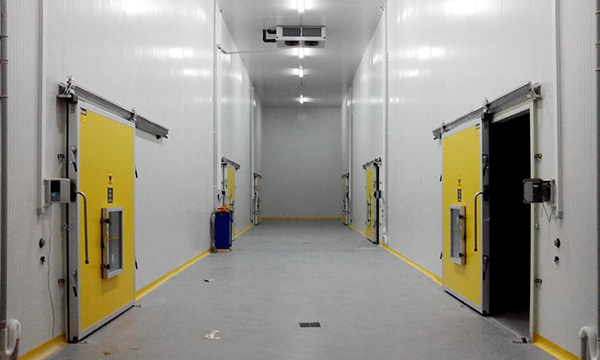Types of food Storage
Low temperature storage of foods
Today, the increase in demand for fresh and natural consumption of foods has increased the importance of cold storage among food preservation methods. During the cold storage, chemical reactions and enzymatic activities are delayed in foods, the proliferation rates of microorganisms and their activities are slowing down, hence the duration of the food's durability is longer.
Temperatures required in the fresh cold storage of foods vary between-1 °c and + 10 °c. During the cold storage of foods, factors that are effective in terms of food safety and quality are as follows:
- Ambient temperature
- Properties of foodstuffs
- Ambient relative humidity
- Composition of ambient atmosphere
- Operations applied to the product before the enclosure
- Time
Frozen storage of foods
 During the preservation of frozen (-18 °c and below), important microbial activities in terms of food safety are completely stopped and there is a decrease in the number of microorganisms. The frozen enclosure has a lethal effect on parasites.
During the preservation of frozen (-18 °c and below), important microbial activities in terms of food safety are completely stopped and there is a decrease in the number of microorganisms. The frozen enclosure has a lethal effect on parasites.
Frozen products that are closest to the fresh ones in the processed products. According to a study, energy consumption per tonne of frozen products is also lower than canned production.
To freeze foods, the following methods are selected depending on the product, quality and freezing speed. In addition, the selection and placement of the shock evaporator, equipped with fans with high pressure and high flow rates, are also important for freezing.
In a well-designed and accurately operated shock freezer, the air velocity on the product should be the same throughout the tunnel. This ensures that all products are frozen evenly.
Preservation in controlled atmosphere
Preserving the quality as much as possible during the preservation of fruit vegetables in the cold, as provided in all conditions for cooling, the oxygen level of the ambient atmosphere in sealed warehouses with the exact meaning of the environment is from 21% to 5% 0.1% levels; CO2 levels are increased from 1% to 5%. The remaining proportion is complemented by nitrogen (N2). Storage in controlled atmospheres, according to the cold storage, increases the retention period by 50% to 100%, depending on the product.

Source: "Food safety and cold chain"-Prof. Dr. Y. Onur devres






